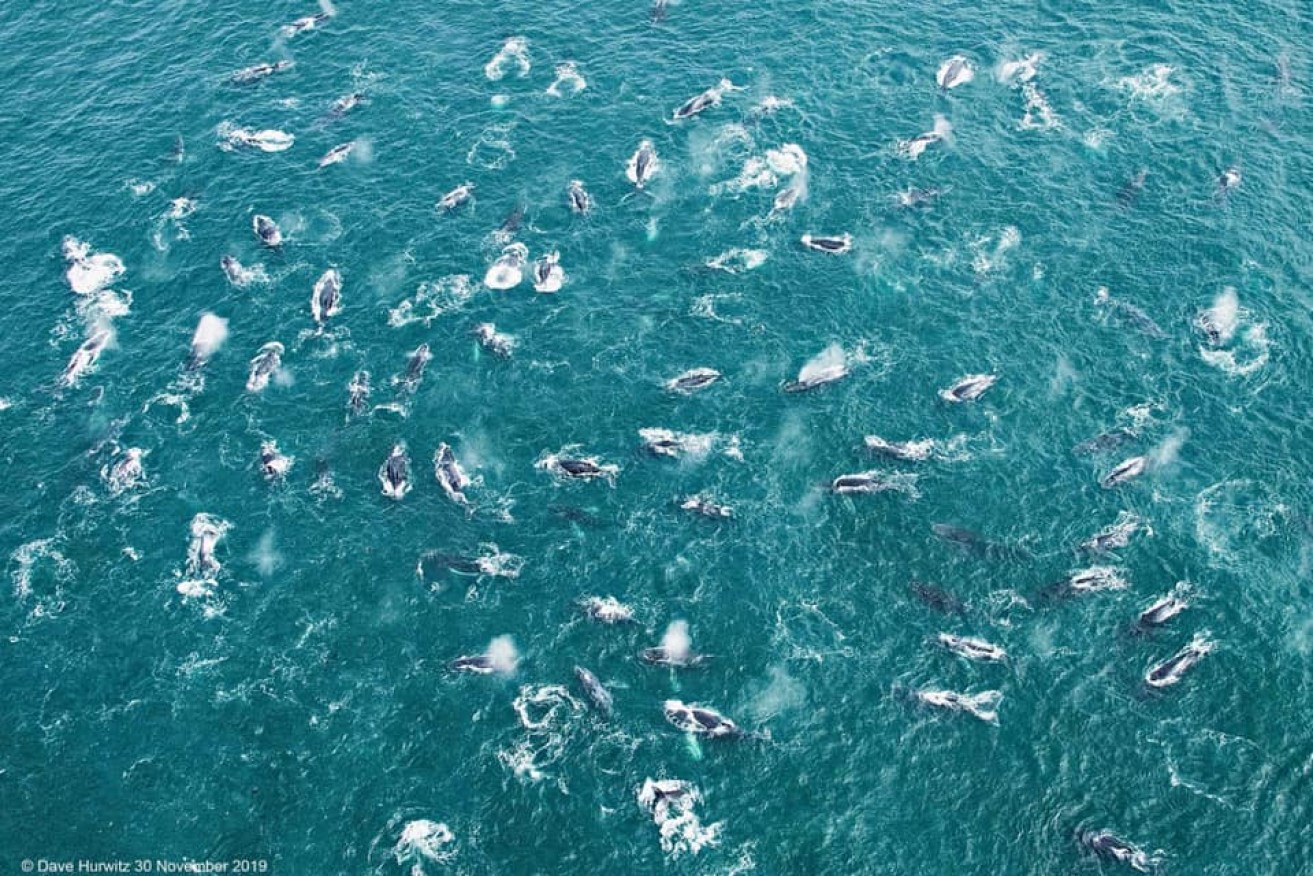Thar she blows: Massive whale super-groups coming to an ocean near you
Supergroups of hundreds of humpback whales could soon be seen in waters off Australia’s east coast after mass feeding pods have begun appearing off the coast of South Africa.


One of the whale super-pods photographed off the coast of South Africa, which experts believe may soon become a phenomenon in Australian waters. (Images: Griffith University)
Researchers at Griffith University, as part of an international team, have identified changing ocean conditions that are leading to the new unique behaviours and mass humpback congregations.
While the phenomenon may be in response to climate change, it could also be a delight for whale watchers and researchers, with the sighting of supergroups of more than 200 whales becoming more common.
Griffith University whale researcher and Manager of the Griffith Whales and Climate Program, Dr Olaf Meynecke, said not only were the groups of whales growing larger, but they were also staying in the same spot and feeding for longer.
“While humpback whales in the Southern Hemisphere are known for annual migrations between the summer high-latitude Southern Ocean feeding grounds and the winter mating and calving grounds in subtropical coastal waters, feeding in such dense packs is unprecedented,” Meynecke said.
“We need to understand what is actually driving these events and how is it connected to the marine environments and what is changing.”
Meynecke said the supergroups that were observed off South Africa, that numbered as high as 500 whales, were generally gathering in the Spring months of October to December. However, supergroups had also begun appearing in April.
The researchers said the unusually large feeding groups of humpback whales in South Africa coincided with the changes in ocean circulation of the region and a higher-than-normal phytoplankton blooms.
“The animals seem to be triggered by a very unusual event in their region,” Meynecke said.
“What seems to have triggered it is that there was so much food. While they are very opportunistic, it doesn’t really make sense for a lot of large animals to stay around if there’s not enough food and they’ve stayed in the area for quite a long time.”
Meynecke said the ocean current conditions in Australia were very different to those in South Africa, but larger groups of feeding humpback whales had begun gathering off the east coast.
“Unlike in South Africa the large whale pods that have started to show up in Australia only last for a short period of time, but supergroups of humpback whales off the coast of Australia are increasingly likely in the years to come,” he said.
“The animals are starting to appear in much larger numbers, and that’s not just because we’ve got more whales. In one year, it might have jumped from 40 to 50 animals, then in one year we went up to over 100 animals,” he said.
“There’s also the similar behaviour to in South Africa, so these animals must be communicating to each other to take advantage of the productivity in the ocean.”
He said it was not yet fully known what was driving the changes in ocean currents and productivity that was altering whale behaviour.
“There are signs that the major changes that are occurring in the marine environment and ocean circulation are driven by climate change,” he said.
“But the whales are starting to learn that they have to be at the right place at the right time. It’s fascinating – how do they manage to find these places and how do they communicate with the others?
“It cannot be random that we have so many animals show up at the same time, so they must be communicating with each other about these events. Are they talking about this during their migration or at their breeding grounds?
“It doesn’t make any sense that you would communicate this if there wasn’t enough food, so they’re communicating this for a reason, and it maybe that they have to do this now because the productivity of food in the ocean is changing.”












